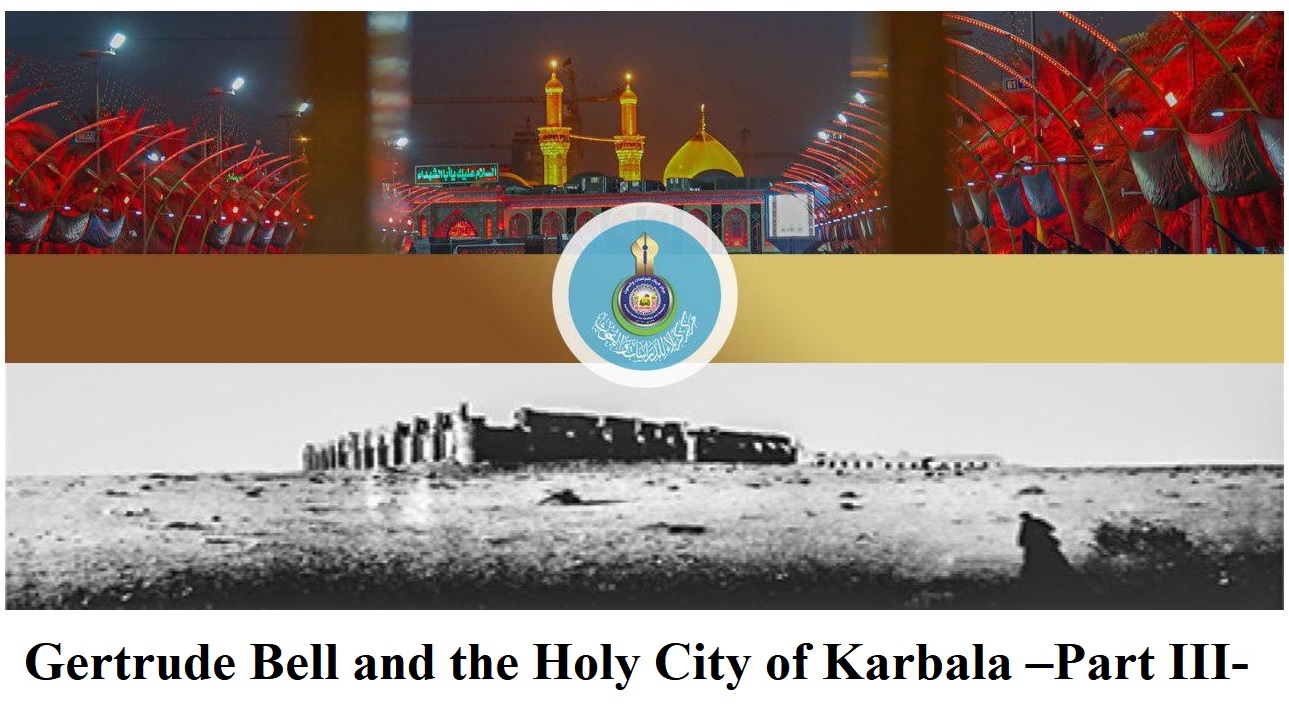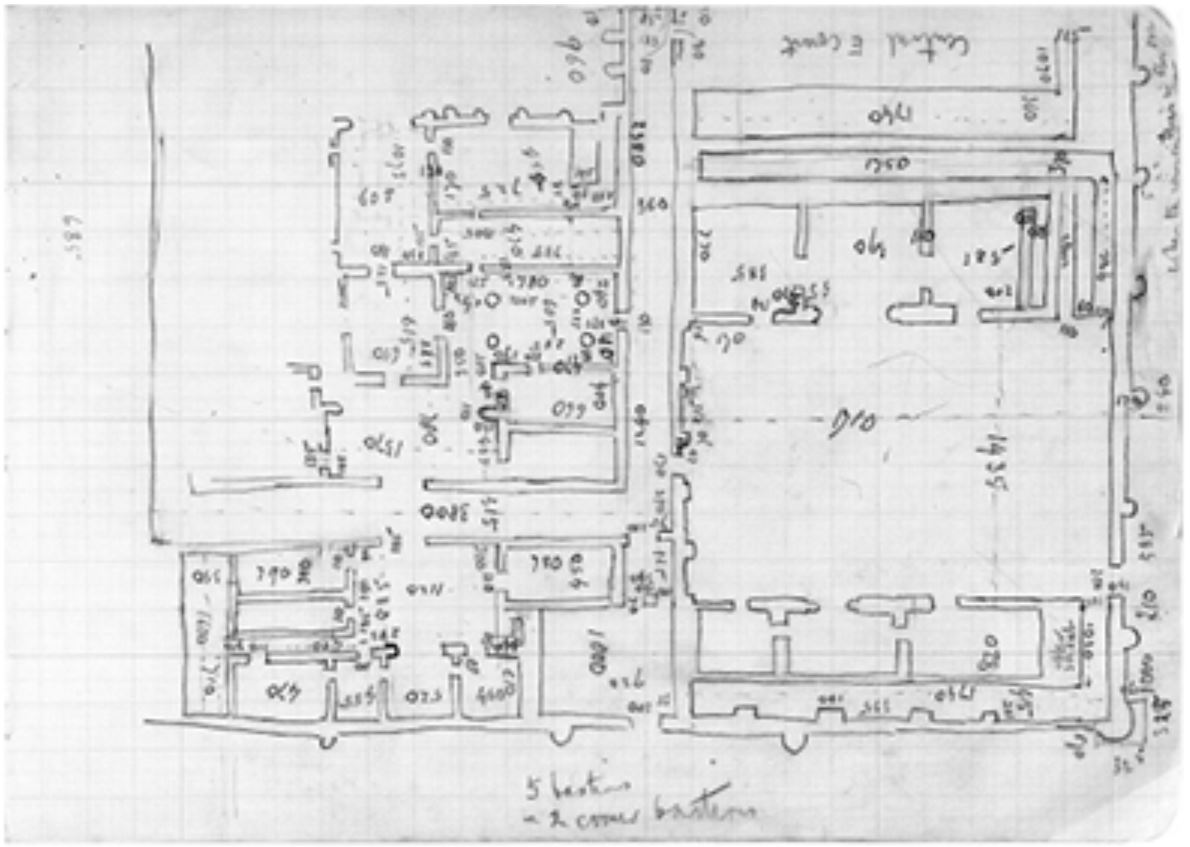A page from Gertrude Bell’s field notebook, showing her sketch plan of the south-eastern sector of the Ukhaidir palace and her measurements. Bell is holding this notebook in.
In the early months of 1911, during her second journey to Mesopotamia, Bell included a short stop at Ukhaidir, staying three days to take additional measurements and photographs.
By this time, the Jawf Arabs had left, replaced by the Zagarit – a sub-group of the Shammar tribe – whose tents were pitched nearby. During the day, when Bell was working on her measurements, the Zagarit would appear in the castle, sitting in a circle around her expedition's tents in the inner courtyard, sewing new shirts and watching her progress.
It would appear that Bell had possession of a plane table on this trip, for she mentions using it to make a plan of the castle and to assist with taking elevations, a task that consumed much of her time. Even with this effort, however, she remained satisfied with her earlier 1909 plan, describing it as ‘wonderfully accurate’ and possessing only one or two mistakes. For photography, she took shots of architectural features that she had missed in 1909 and used a telephoto lens for additional close-range details.
Source:
In Search of Kings and Conquerors, Gertrude Bell and the Archaeology of the Middle East - Lisa Cooper
[Pg. 111].


